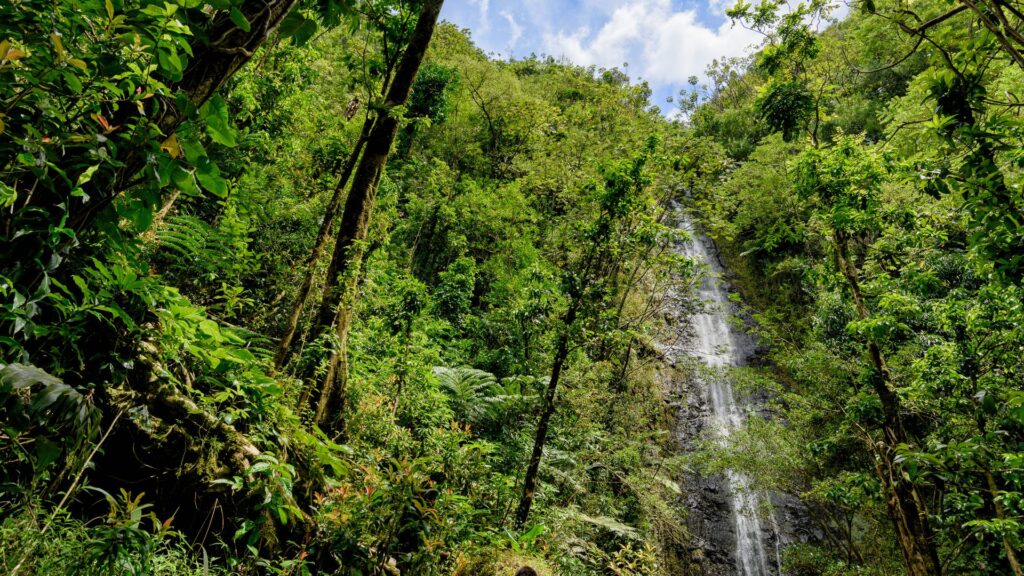This guide brings together key Hawaii experiences with a practical focus. You’ll find what to expect at each site, how to prepare, and which conservation rules to follow, with clear tips on reservations, hours, gear, and access so you can make the most of your time without. Enjoy Oahu!
Enjoy Waikīkī Beach

Waikīkī Beach offers travelers a well-rounded Hawaiian experience, combining relaxation, adventure, and cultural immersion along a scenic two-mile coastline. Known for gentle waves ideal for beginners, surfing lessons are abundant, along with stand-up paddleboarding and kayaking options. Sailing on a catamaran at sunset provides spectacular ocean views, complemented by the striking presence of Diamond Head.
Food enthusiasts can indulge in fresh local seafood, especially poke—raw fish seasoned traditionally and served over rice—and cool down with delicious shave ice from various beachside stands.
Cultural highlights include lively hula performances and authentic luaus that feature music, dance, and Hawaiian cuisine. Nearby, the Waikīkī Historic Trail reveals the area’s royal heritage and transformation into a popular tourist destination.
After dark, Waikīkī offers an energetic nightlife with diverse options ranging from beach bars featuring live music to trendy nightclubs. Shopping is equally appealing, with upscale boutiques and local artisan markets providing unique souvenirs.
For relaxation, visitors can enjoy wellness treatments incorporating local ingredients like coconut oil and Hawaiian sea salt, often accompanied by yoga and meditation near the ocean.
Visit Pearl Harbor

Pearl Harbor is a must-visit site for travelers interested in history and culture. Beyond its historical significance, the harbor provides an array of engaging experiences suitable for visitors of all ages.
Begin your day at the USS Arizona Memorial, one of Hawaii’s most profound historical landmarks. The memorial stands directly above the sunken battleship USS Arizona, commemorating those who lost their lives during the attack on December 7, 1941. Programs to the memorial depart by boat; the visitor center film is optional and separate from the memorial program.
Next, explore the Battleship Missouri, famously known as the “Mighty Mo.” Here, history enthusiasts can walk the decks where World War II officially ended in 1945. Interactive guided tours bring the ship’s fascinating history to life, and self-guided options allow you to explore at your own pace.
Don’t miss the USS Bowfin Submarine Museum & Park, offering visitors the unique opportunity to tour an authentic World War II submarine. Walking through its narrow passageways provides a vivid glimpse into the daily lives of sailors during wartime. The adjacent museum houses fascinating exhibits and artifacts related to submarine warfare.
Aviation lovers will appreciate the Pearl Harbor Aviation Museum, located on Ford Island. The museum showcases restored aircraft and captivating exhibits detailing the critical role aviation played during and after the Pearl Harbor attack.
Visitor Center open 7:00–17:00; USS Arizona programs 8:00–15:30. Free program with a $1.00 online reservation (≈ €0.85). No bags allowed inside; on‑site storage available. Parking $7/day. Arrive early.
Hike Diamond Head (Lēʻahi)

Diamond Head, one of Oahu’s most iconic landmarks, offers travelers an exciting opportunity to connect with nature and enjoy breathtaking panoramic views. Located just a short distance from Waikīkī, this extinct volcanic crater provides an ideal escape for those looking to add some adventure to their Hawaiian itinerary.
The highlight of Diamond Head is the rewarding hike to its summit, suitable for most fitness levels. The trail, approximately 1.6 miles round-trip, is moderately challenging but entirely doable, even for casual hikers. As you ascend, you’ll navigate through winding paths, stairs, and historic military bunkers dating back to World War II, adding historical intrigue to your hike.
Once at the summit, visitors are treated to spectacular 360-degree views of Honolulu, Waikīkī Beach, the lush mountains, and the Pacific Ocean. It’s a perfect spot to capture memorable photographs, particularly during sunrise or early morning, when the lighting is at its best and the weather is cooler.
Reservations required for non‑residents. Entry $5.00 pp (≈ €4.25) and parking $10.00/vehicle (≈ €8.51). Hours 6:00–18:00; last entry 16:30. Steep stairs; trail not ADA accessible—carry water and sun protection.
After the hike, travelers can refresh themselves with a dip at one of the nearby beaches, such as Kaimana Beach, offering calm waters perfect for swimming and relaxation.
Bathe in the waters of Hanauma Bay

Hanauma Bay, nestled along the southeastern coast of Oahu, is an inviting marine sanctuary known for its clear waters and abundant marine life. Recognized as one of Hawaii’s most spectacular snorkeling spots, the bay provides travelers an unparalleled opportunity to explore vibrant underwater ecosystems just a short drive from Honolulu.
The calm, shallow waters of Hanauma Bay are perfect for both experienced snorkelers and beginners. Beneath the surface, visitors will find a diverse array of marine life, including colorful tropical fish, sea turtles, and fascinating coral formations. The bay’s protected status ensures a thriving environment, making it ideal for nature lovers and underwater photography enthusiasts.
Upon arrival, guests are required to watch a brief educational video explaining conservation guidelines to protect the delicate reef ecosystem. Rental equipment, including snorkel gear and life vests, is readily available on-site, making spontaneous visits convenient.
Open Wed–Sun. Entry 6:45–13:30; all visitors out by 16:00. Non‑residents $25.00 (+ online fee) (≈ €21.27) and parking $3 cash (≈ €2.55). Reservations open two days prior at 7:00 AM HST; snorkel rentals 7:00–15:00; use reef‑safe sunscreen.
Visit Polynesian Cultural Center

The Polynesian Cultural Center, located on Oahu’s scenic North Shore, offers visitors an immersive experience into the diverse cultures of Polynesia. A visit here is perfect for travelers interested in exploring traditions, history, and vibrant performances, making it an enriching addition to any Hawaiian itinerary.
The center showcases authentic villages representing various Polynesian islands, including Hawaii, Samoa, Fiji, Tahiti, Tonga, and Aotearoa (New Zealand). Visitors can explore these interactive exhibits, engaging in hands-on activities such as learning traditional dances, craft-making, canoe rides, and tasting local delicacies.
One of the day’s highlights is the colorful canoe pageant, where performers present dances and music unique to each island, offering a vivid celebration of Polynesian culture. In the evening, don’t miss the renowned live show “Hā: Breath of Life,” a powerful theatrical performance combining storytelling, traditional dance, fire displays, and captivating music.
Open 12:00–21:00; closed Sundays and Wednesdays. Purchase tickets online in advance; package options combine villages, dinner, and the evening show.
Snorkel on Oahu’s North Shore

Oahu’s North Shore, famed for its world-class surf during winter months, transforms into a snorkeling paradise in the calmer summer season. Travelers looking to discover vibrant marine life and pristine underwater scenery will find plenty to love along this scenic coastline.
One of the North Shore’s most popular snorkeling locations is Shark’s Cove, part of Pupukea Beach Park. Known for its crystal-clear waters and diverse marine ecosystem, Shark’s Cove offers snorkelers the opportunity to see colorful fish, sea turtles, and fascinating coral formations up close. The cove’s shallow pools and protected waters make it accessible even for beginners.
Another excellent spot is Three Tables Beach, just next to Shark’s Cove, providing similarly rich underwater experiences. Here, snorkelers can enjoy calm conditions, picturesque surroundings, and abundant marine life, all within a relaxed and uncrowded environment.
Summer (May–Sep) brings calmer seas; winter swells (Nov–Apr) can be hazardous. Shark’s Cove and Three Tables lie inside the Pūpūkea Marine Life Conservation District—do not touch or take marine life.
Visit Haleakalā National Park

Visiting Haleakalā National Park is a remarkable way to experience the stunning natural beauty and unique landscapes of Maui. Dominated by Haleakalā, a dormant volcano rising more than 10,000 feet above sea level, the park offers breathtaking views, unforgettable sunrises, and outstanding hiking opportunities.
The park’s highlight is watching the sunrise from Haleakalā’s summit. The experience of witnessing the sky gradually illuminate, revealing a dramatic volcanic landscape above the clouds, is genuinely awe-inspiring. Due to the popularity of this experience, reservations are required, so visitors should book online in advance.
After sunrise, travelers can explore the various hiking trails suitable for different skill levels. Popular options include Sliding Sands Trail, providing mesmerizing views and landscapes reminiscent of another planet, and the Halemau’u Trail, which descends into the crater, offering stunning panoramas and a close-up look at native flora and fauna.
Beyond hiking, Haleakalā National Park is an excellent location for bird-watching, especially for spotting the rare nēnē, Hawaii’s state bird. Stargazing is another incredible activity here, as the clear night skies at high altitude offer exceptional visibility.
Sunrise viewing (3:00–7:00) requires a $1.00 per‑vehicle reservation via Recreation.gov (≈ €0.85), bookable up to 60 days ahead; park entry fee not included. Summit ~10,000 ft—dress in layers and bring water; allow at least half a day.
See turtles at Laniakea Beach

Laniakea Beach, affectionately known as “Turtle Beach,” is one of the most beloved spots on Oahu’s North Shore for nature lovers and wildlife enthusiasts. Renowned for its resident Hawaiian green sea turtles, Laniakea provides visitors an exceptional opportunity to observe these majestic creatures in their natural habitat.
Visitors to Laniakea Beach frequently encounter turtles basking peacefully along the shoreline or gracefully swimming in the gentle surf. These encounters offer remarkable photography opportunities and a chance to learn about the turtles from volunteers who provide educational insights and ensure respectful interactions.
To protect the turtles, visitors should stay at least 10 feet (3 meters) away and refrain from touching or feeding them. Observing these gentle creatures from a respectful distance ensures their safety and preserves their natural behaviors.
Parking near Laniakea Beach is limited and roadside; arrive early or later in the afternoon and use caution crossing Kamehameha Hwy. Bring water and sun protection.
Trekking through the Ehukai Pillbox

The Ehukai Pillbox hike, situated on Oahu’s North Shore, offers travelers a rewarding adventure combined with spectacular panoramic views. Known locally as the “Sunset Pillbox Hike,” this moderate trail is perfect for those seeking an active experience amid the lush Hawaiian landscape.
The trail takes hikers through shaded paths and scenic ridgelines, eventually leading to two historic military bunkers known as “pillboxes.” These pillboxes offer incredible vantage points, where visitors can enjoy vistas of the famous Banzai Pipeline surf break, Sunset Beach, and the expansive North Shore coastline.
At roughly 2 miles round trip, the Ehukai Pillbox hike is achievable for most fitness levels but includes some steep sections. Proper footwear is highly recommended due to occasional muddy and uneven terrain. The trek typically takes around 1 to 2 hours to complete, depending on your pace and how long you linger at the viewpoints.
Start early or late to avoid heat; the first stretch can be steep and muddy after rain. Park respectfully near Sunset Beach Elementary; carry water, insect repellent, and sun protection.
Visit Manoa Falls

Visiting Manoa Falls provides travelers with a delightful escape into Oahu’s lush, tropical rainforest, just a short drive from the bustling city of Honolulu. Known for its scenic beauty and accessibility, this hike culminates in a picturesque waterfall, making it one of the island’s favorite outdoor adventures.
The well-marked trail leading to Manoa Falls is approximately 1.6 miles round-trip, winding gently through dense greenery, towering bamboo groves, and vibrant flora. As you hike, you’ll experience the calming sounds of nature, making the journey itself as enjoyable as the destination.
The waterfall at the trail’s end plunges about 150 feet into a small pool, creating a captivating sight ideal for photography. Swimming is strongly discouraged due to leptospirosis risk and occasional rockfall, but the scenery at Manoa Falls remains both calming and inspiring.
Expect muddy sections after rain; wear sturdy, closed‑toe footwear and bring insect repellent, sunscreen, and water. The out‑and‑back trail usually takes 1–2 hours at a comfortable pace.
Disclaimer on prices and schedules: All prices, fares, schedules, and other practical information in this article have been verified and are accurate as of September 2025. However, transport companies, restaurants, and attractions may change their conditions without prior notice. We recommend double-checking details on official websites before making any bookings or travel plans.

